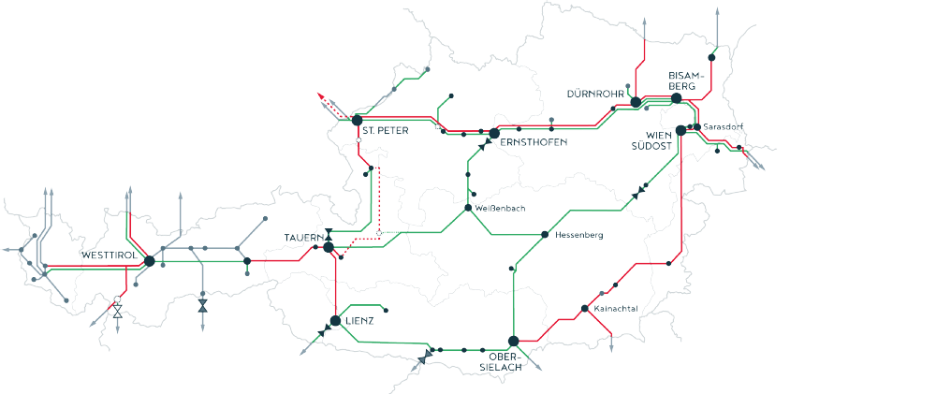Security is in our DNA
The power grid operated by Austrian Power Grid AG is the backbone of Austria’s power supply.
The APG team is made up of around 850 experts who work around the clock to make sure power is provided seamlessly whenever and wherever it is needed. Due to the huge changes in the power system, great effort and creative thinking is now required to keep the power grid stable and ensure a constant supply of electricity.
The data on the static network model can be found for the Core Region on the JAO homepage.

Power grid
A strong electricity grid is the basis for a secure power supply.
APG’s trans-regional transmission grid consists of nearly 7,000 km of power lines that supply Austria with electrical energy. The grid connects the power plants to Austrian homes and businesses to form a widespread supply network incorporating the distribution grids of the individual federal states.
Downloads
APG grid in numbers
APG manages Austria’s transmission grid operating at 110-kV, 220-kV and 380-kV voltage levels.
3.500
6.970
100.000
31.960
65
92
The flow of current in the electricity grid
Grid structure: the network levels
The power grid is made up of network levels comprising extra-high, high, medium and low voltage levels. In APG’s trans-regional transmission grid, electricity is transported at the extra-high voltage levels of 220 kV and 380 kV and the high-voltage level of 110 kV. Extra-high voltage is necessary to enable electricity to be transmitted as efficiently as possible across great distances in the transmission grid. Electricity also flows at high and medium voltage levels in the ten directly connected regional distribution networks before continuing to the local low-voltage networks, where it comes out of the socket at 230 volts. The different network levels are connected via substations.
APG’s core task: maintaining the balance at 50 hertz
Around 75% of Austria’s electricity comes from renewable energy sources. Although hydropower has traditionally been the most important source of energy in Austria, wind and solar power have been heavily developed in recent years. The Austrian federal government set a goal for itself of generating sufficient electricity in order to cover 100% of total national electricity consumption (national balance) from renewable energy sources by 2030.
Power generation is based on the principle that electricity supply must be matched precisely to electricity demand at all times. The measure of the balance between supply and demand is known as the grid frequency. To ensure an intact supply of electricity, the frequency of the grid must be maintained at exactly 50 hertz. The core task of APG is to keep the grid frequency at the 50-hertz level on a continuous basis.
Trans-regional electricity transmission: APG connects wind farms in eastern Austria with pumped storage systems in western Austria
The structure of the electricity grid is similar to that of a road network. APG’s superordinate, trans-regional transmission network transports electricity from neighbouring countries to Austria and from Austria to its neighbours via all Austrian states. The subordinate distribution grids in the Austrian states are fed with electricity from the APG grid, which they then bring directly to the consumer. APG’s grid plays an absolutely crucial role in the transition to new forms of energy. It connects eastern Austria’s wind power plants and western Austria’s pumped storage power plants with Austrian consumers.
Substations: the hubs of the electricity supply system
To enable electricity to be used in homes and businesses, it first needs to be transformed, i.e. converted, to a lower voltage level and then supplied to grid partners. The voltage is converted at substations and switching stations, of which APG operates a total of 65 across Austria. Transformers at these facilities convert the voltage so that it can continue on its journey to the consumer. The switching stations located at substations act as the hubs, or nodes, connecting the power lines by guiding the flow of energy. The APG grid, as the superordinate electricity transmission network, is then connected via substations to all of Austria’s distribution grids.

